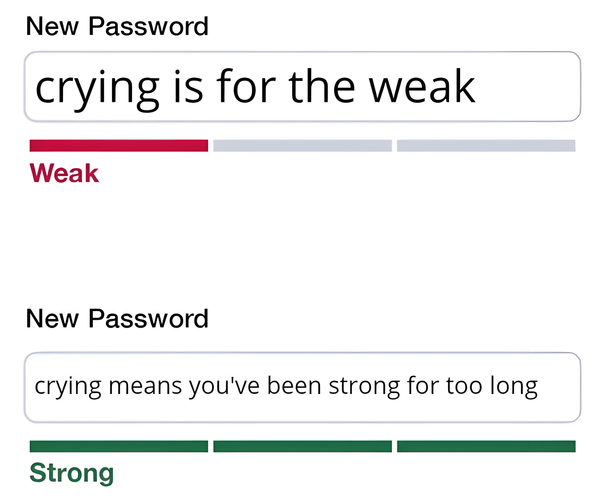The Manager's Guide – #89
Weekly Hand-Picked Collection Edition

Do you keep executing the same old processes even if they do not serve the purpose?
Avoiding Favoritism in the Workplace
- 👥 Unintentional favoritism can be just as damaging as deliberate bias — causing decreased morale, resentment, and up to 26% lower performance in “unfair” environments
- ⚖️ Common manifestations of favoritism include uneven task distribution, selective personal engagement, and repetitive praise towards the same individuals
- 📈 Teams in inclusive environments show impressive gains — 35% higher productivity, 29% increase in collaboration, and employees are 300% more likely to report job satisfaction
- 🎯 Key prevention strategies: Monitor task assignments systematically, maintain regular engagement with all team members, implement anonymous feedback systems, and conduct standardized performance evaluations
- ⚠️ Legal and business risks of unchecked favoritism include high turnover rates, potential discrimination lawsuits, and damaged organizational reputation
- 💡 Leadership shadow matters — upper management must actively demonstrate commitment to fairness through training programs, regular monitoring, and clear communication of equality as a core value
What I tell people new to on-call
- 🎯 The primary role is triage, not heroics — assess situations and coordinate responses rather than trying to fix everything alone
- 🤝 Don't hesitate to call for backup — it's better to wake someone unnecessarily than to let an incident escalate while trying to handle it solo
- 📢 Communication is critical — provide regular updates (every 15-30 minutes during active incidents), keep stakeholders informed, and over-communicate in incident channels
- 📝 Detailed timestamped notes are essential — they help track your debugging process, assist others joining mid-incident, and are crucial for post-mortems
- 🌱 On-call duty is a significant learning opportunity — you'll gain exposure to new systems, understand how things break, and develop better coding practices
- 💪 Take care of your health — not everything needs immediate attention at 3 AM, and it's okay to push back against unreasonable on-call schedules
- 🔍 Be methodical in your approach — reproduce issues first, test hypotheses systematically, and document everything before implementing fixes
- 🎓 Shadow experienced team members before taking primary on-call responsibility — observe their process and learn from their experience
Referent Power: The Subtle Tool of Effective Leadership
Referent power is leadership influence earned through respect and admiration — when people follow you because they want to, not because they have to.
- 💫 Referent power differs from charisma — it's built on deep trust and respect over time, not natural magnetism or charm
- 🤝 Core elements include authenticity, consistency between words and actions, creating shared identity, and demonstrating genuine vulnerability
- ⏳ It's rare because it requires significant time investment and emotional commitment — leaders often default to quicker forms of power like rewards or coercion
- 🎯 Unlike formal authority, referent power is fragile — it can evaporate quickly if trust is broken, yet is more resilient when properly maintained
- 🌱 Key building strategies include “quiet consistency,” leading by example, strategic vulnerability, and focusing on micro-actions that reinforce values
- 👥 Success comes through genuine relationship building — regular non-task conversations, active empathy, and getting “in the trenches” with the team
- 🎭 Leaders must maintain alignment between public and private behavior — consistency across all contexts builds deep trust
- 📊 It's less visible than other forms of power — operating subtly through influence rather than direct authority, making it harder to measure but ultimately more effective
Career Advice: Simplifiers Go Far, Complexifiers Get Stuck
- 🎯 Core concept: There are two types of people — simplifiers who make complex things simple, and complexifiers who make simple things complex
- 🚫 Warning signs of a complexifier: slow progress, blaming complexity for delays, creating artificial prerequisites, and using excessive business jargon
- 💡 Test for real complexity: Ask yourself if something is genuinely complex, or if you're making it complicated because you either don't want to do it or don't know how
- 📈 Career impact: Simplifiers tend to advance (“What does a complexifier call a simplifier? Boss.”), while complexifiers often get stuck in middle management
- 🗣️ Communication style matters: While jargon may impress peers, it often alienates both superiors and subordinates — clear communication is valued at senior levels
- ⚡ Einstein's principle: “If you can't explain it to a six-year-old, you don't understand it yourself”
- 🎨 Key to simplifying: Invest energy in finding apt metaphors and clear explanations, always striving to make complex concepts accessible
Ideas from “A Philosophy of Software Design”
- 🚫 Zero-tolerance towards complexity — complexity accumulates through small compromises and manifests in three ways: changes requiring multiple updates, high cognitive load, and unclear dependencies
- 🎯 Common misconception about modularity — smaller components aren't always better; splitting functionality can actually increase complexity through additional management overhead and duplicated effort
- ⚡ Merge components when they: share information, are always used together, overlap conceptually, or are difficult to understand in isolation
- ⚠️ Exception handling is a major source of complexity — best addressed through three strategies: eliminating exceptions by design, handling issues at lower levels, and aggregating multiple exceptions into single handlers
- 💡 Key principle: System complexity grows from many small decisions, not single big mistakes — success requires constant vigilance and thoughtful design choices
- 🔄 Better approach to errors — instead of passing exceptions upward, handle them where they occur since higher levels of code often won't know how to handle them either
- 🎨 Design philosophy — focus on reducing complexity rather than blindly following rules like “split any method longer than X lines”
How to deliver bad news when it's not your fault
- 🎯 Core principle: People tend to associate negative feelings with the messenger, even when it's not their fault — managing this dynamic is crucial
- 💬 Language matters — avoid negative words like "unfortunately" and "however" as they can trigger emotional responses and make situations seem more dramatic
- 🎨 Keep it simple — resist the urge to over-explain or provide excessive details, which often stems from guilt and can overwhelm the recipient
- ⚡ Be direct and quick — deliver the news promptly as delaying or adding too much preface builds tension and anxiety
- 🤝 Highlight shared agency — remind people of their involvement and decision-making role in the situation, but do so tactfully
- ⚠️ Watch for accidental blame — be careful not to phrase messages in ways that might suggest you're accepting fault when you aren't responsible
- 📝 Focus on solutions — after delivering the news, shift the conversation toward next steps and collaborative problem-solving
- 🎓 Professional impact — handling bad news poorly can affect your career by associating you with negative outcomes, even when they weren't your fault
That’s all for this week’s edition
I hope you liked it, and you’ve learned something — if you did, don’t forget to give a thumbs-up and share this issue with your friends and network.
See y’all next week 👋



